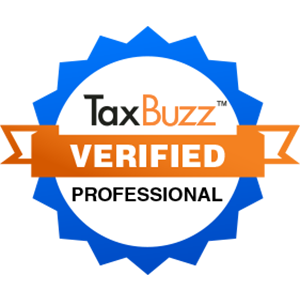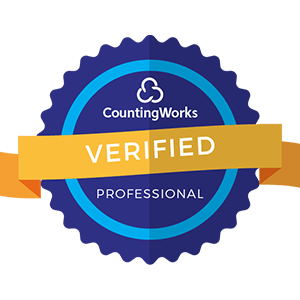
Businesses of all sizes need to set up an effective payroll management system that works in conjunction with other business functions. The process is not always a simple one, however: Payroll costs usually represent a significant expense for companies, for example, and there are many compliance and tax requirements that must always be followed.
Implementing payroll best practices ensures that these requirements are met while helping the business become more organized and efficient. Here is your guide to payroll management, why it is important, and payroll best practices to get it right.
Businesses need to take the right approach to gathering and storing employee records, managing salary budgets, tracking hours, withholding tax from paychecks, distributing paychecks, and keeping company data up to date. Payroll is usually under the purview of the human resources (HR) department, where hiring, recruitment, and benefits management are integrated. All these moving parts should work together to ensure company and employee information is accurate, remains secure, and that the compensation process runs smoothly.
Your payroll management approach must thus be deliberate, efficient, and updated regularly to keep your business from hitting any unnecessary speed bumps. Here are a few additional reasons why it is so important to have a solid strategy in place for payroll management:
An effective payroll system ensures employees and independent contractors always get paid on time. If you want to lose the trust of either, a late paycheck might be the quickest way.
It can be challenging to keep track of the necessary information on employees, hours worked, salaries, and benefits. Payroll best practices ensure that data is accurate and that everything is handled correctly.
Accurate, complete internal records are required for payroll tax obligations. W-2s and other tax forms must be managed properly so reporting is done the right way and the correct amounts are being withheld.
HR manages sensitive data from employees and the company that needs to be secured and organized.
Implementing best practices helps you manage everything diligently. The consequences of mishandling payroll can be severe, with angry employees, loss of trust, and errors in tax preparation being just a few of the problems that can result.
.webp?width=960&height=576&name=Untitled%20design%20(66).webp)
Creating the right payroll management plan requires that you implement the right steps. It’s important to understand that these action items may evolve, depending on changing tax laws or the shifting needs of your growing business. The following best practices for payroll are a good start toward solidifying your approach and ensuring that it will work for your company.
Keep Track of Deadlines
Create Written Policies
Keep Complete Records
Improve Time and Attendance
Classify Employees Correctly
File on Time
Improve Your Payroll System
Upgrade Your Payment Method
Take Advantage of Cloud Security
You need a reliable system in place for tracking payroll-related deadlines. Try using a digital calendar that sends automated reminders.
Your business may already have an employee handbook, but consider creating a separate payroll manual that answers common questions related to issues such as pay periods, paid time off, and tax forms. Having a manual helps HR employees avoid getting a lot of the same questions from different employees.
Employee records may be substantial for your organization, but using an online tool like a management software package can help you save and secure all this data digitally. Issues can arise quickly, and sometimes years after the fact, so always keep complete employee records. This includes maintaining retirement statements, pay stubs, and tax forms for several years.
If your employees track their time, create a better system that lets them clock in and out seamlessly. With real-time tracking solutions, you can stay ahead of the game if an employee is going to hit overtime hours, and you can better manage who qualifies to receive benefits.
Your business may hire independent contractors in addition to part- and full-time employees. Some of your workers may be exempt and some non-exempt. It is crucial that you classify these workers correctly to avoid IRS penalties.
There are many deadlines to manage for payroll. Make sure you file tax returns, pay estimated tax, conduct ACA reporting, and file W-2s and 1099s on time, if applicable. Remember that you also have deadlines for sending employees their tax forms each year.
It may be time to upgrade your payroll system if all these best practices seem impossible to implement. Keep track of how long these tasks are taking to complete and assess whether another solution would help you save time. You may want to consider using automation tools that will do a lot of the work for you while ensuring that data is accurate.
Are you still paying employees with physical checks? Consider upgrading to direct deposit. This approach allows you to pay workers directly into their bank accounts, which eliminates a lot of paper and speeds up the payroll system. It is also easier to manage year-end reporting when these records can be accessed digitally.
Your company’s sensitive data needs to be protected online. Find the right security solution for cloud storage so employee and company information is always safe and secure. The cloud also gives you more flexibility for storage limits.
These best practices will keep your payroll function up to date and efficient, plus help you ensure that you are submitting everything on time and complying with laws and regulations. Working with a payroll expert and specialist is a great way to get your systems updated so these best practices are put in place smoothly.
Updating your payroll system can take a lot of time. You may need assistance finding the right solutions, tools, and software for more efficient workflows. These considerations are crucial to avoid making a mistake or missing a deadline.
The Ignite HCM team is here to help you with ADP payroll services and consulting. We understand how demanding these processes can be, and we want to help you optimize your processes for the best results. Contact Ignite HCM for help with your payroll management and HR organization needs.


